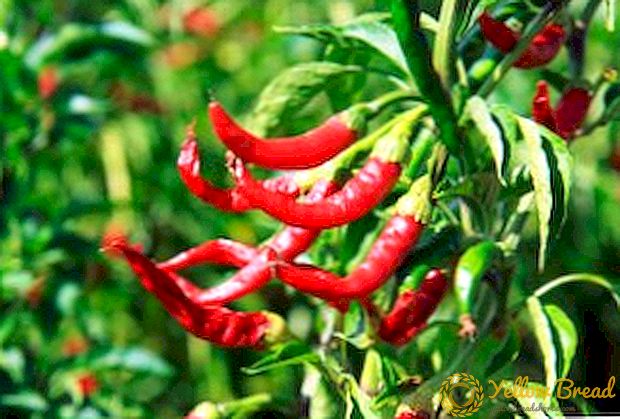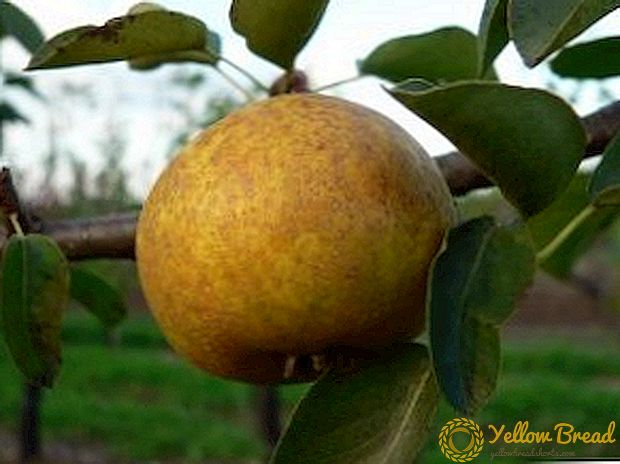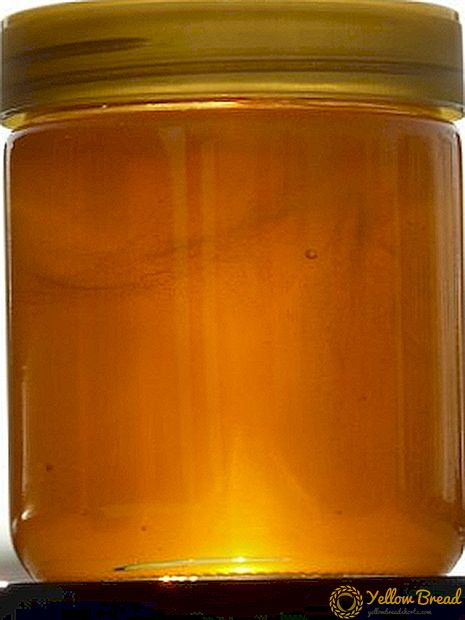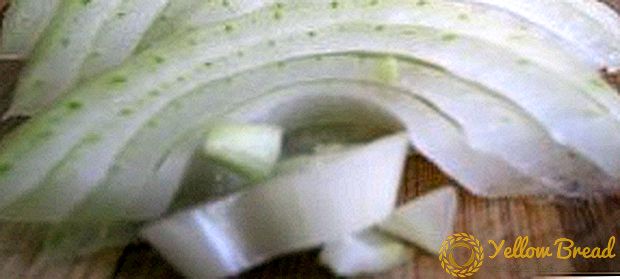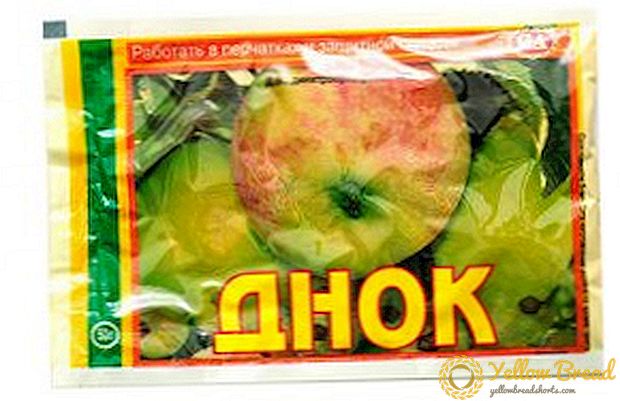 Many people love turkey meat for its taste, nutrient content and low-calorie nutritiveness, and this stimulates the poultry houses to start some types of turkeys in their households that will provide healthy and dietary meat to the family. There are types of turkeys with a high level of egg production, it makes sense to get them to people who want to get fresh homemade eggs daily. After the novice poultry farmer decided to breed this large poultry, he has a logical question - how to choose turkeys with optimal qualities and certain conditions of housing, because everyone knows that the turkey is very demanding to care.
Many people love turkey meat for its taste, nutrient content and low-calorie nutritiveness, and this stimulates the poultry houses to start some types of turkeys in their households that will provide healthy and dietary meat to the family. There are types of turkeys with a high level of egg production, it makes sense to get them to people who want to get fresh homemade eggs daily. After the novice poultry farmer decided to breed this large poultry, he has a logical question - how to choose turkeys with optimal qualities and certain conditions of housing, because everyone knows that the turkey is very demanding to care.
- Cross turkey "Kharkov-56"
- Cross turkeys "BIG-5"
- Cross turkeys "BIG-6"
- Cross turkeys "BIG-9"
- Cross turkey "BJT-8"
- Cross turkey "Universal"
- Cross turkeys "Khidon"
- Cross turkey "Victoria"
Breeding work to improve one type of turkey or other includes selection of young stock lines according to certain characteristics - high weight of the carcass, egg production, vitality of both one and several breeds. Then Breeders cross several lines of parents and their offspring, as well as successful hybrids, and as a result receive a cross that has its own distinctive features.
In this article we will introduce you to the most popular turkey crosses, knowledge of which will help determine the choice of poultry for domestic or industrial breeding.
Cross turkey "Kharkov-56"
Cross turkey "Kharkiv-56" refers to the average type, derived on the basis of the Institute of Poultry NAAS, which currently continues to work with the breeding herd. The bird of this cross-country is adapted for walking and is relatively well adapted for trouble-free keeping and local food. At 13 weeks of age, the live weight of a bird is 2-2.5 kg, at 17 weeks - 2.5-2.7 kg, at 20 weeks - 2.8 - 3.2 kg, while the share of slaughter yield can reach 85 %
 Adult males can weigh about 20 kg, and females - 10. Eggs of turkeys begin at about 8 months, therefore, by 6 months of age, birds should be chosen whose qualities you want to see in their offspring - weight, body structure, and others. From 4 months of age, it is recommended to separate males from females in order to avoid oppression and injury to the latter. Turkeys of the Kharkiv-56 cross-country during mating need help - you need to bend over the turkey, support the female under the wings until the process is complete.
Adult males can weigh about 20 kg, and females - 10. Eggs of turkeys begin at about 8 months, therefore, by 6 months of age, birds should be chosen whose qualities you want to see in their offspring - weight, body structure, and others. From 4 months of age, it is recommended to separate males from females in order to avoid oppression and injury to the latter. Turkeys of the Kharkiv-56 cross-country during mating need help - you need to bend over the turkey, support the female under the wings until the process is complete.
Cross turkeys "BIG-5"
Cross turkeys "BIG-5" come from England, from where it began to spread everywhere. This a type of medium turkey with good meat qualities officially registered in 2008. Birds of this cross with a long deep body, wide convex chest, fleshy back and developed wings and legs. The plumage is white. The weight of females is about 10-11 kg, males - 17-19 kg. The weight of a 16-week-old young stock can reach 7 kg with an enhanced diet.
Cross turkeys "BIG-6"
Cross turkeys "BIG-6" refers to the heavy type, is one of the most popular among breeders of domestic birds for excellent reproduction and meat characteristics.
This species was bred in 2008 by English breeders. Turkey "BIG-6" has a dense physique with a strong bones, fleshy convex chest. The plumage is white with occasional black patches on the chest. The female may, in one year, carry 110-120 eggs. Adult male turkey "BIG-6" weighs 20-23 kg, the female - 10-13 kg. The share of slaughter yield can reach 80-85%.
The weight of 12-week-old young stock can reach 13-15 kg. This species of birds is rather unpretentious in cultivation, and also differs by intensive weight gain at relatively low feed costs, for this “BIG-6” is very common among poultry farmers. 
Cross turkeys "BIG-9"
Cross turkeys "BIG-9" refers to the heavy type, the content of which does not represent great difficulties. This variety gives a good gain in live weight, compared with the spent feed on the turkey. Cross is popular for endurance of birds, good performance and excellent meat characteristics.
 The body of this species of turkey is dense, the legs are short, the breast is convex, the relatively small head is on the average length of the neck. The plumage is white. The weight of an adult male is about 18-21 kg, females 10-11 kg. For 26 weeks, the female is able to carry about 120 eggs, the hatchability of which is 85%, which allows you to successfully breed this cross in the household. It is from the "BIG-9" occurs several lines of turkeys, which derive the breeders.
The body of this species of turkey is dense, the legs are short, the breast is convex, the relatively small head is on the average length of the neck. The plumage is white. The weight of an adult male is about 18-21 kg, females 10-11 kg. For 26 weeks, the female is able to carry about 120 eggs, the hatchability of which is 85%, which allows you to successfully breed this cross in the household. It is from the "BIG-9" occurs several lines of turkeys, which derive the breeders.
Cross turkey "BJT-8"
Cross-turkeys "BJT-8" - medium-heavy type, the characteristic of which is characterized by precocity and a fairly large set of live weight. "BYT-8" was launched in England, the date of registration of the cross - 2007.
The appearance is specific - the body is rather large, round in shape, the head is large, elongated. Powerful medium length legs wide apart, chest well developed. The neck is slightly arched, of medium length. White plumage, growths on the head bright red. A 20-week-old turkey weighs about 17 kg, a turkey - 9 kg. It makes sense to slaughter a bird, whose age is 14-17 weeks, the cost of further maintenance significantly exceeds the increase in live weight. 
Cross turkey "Universal"
Cross "Universal" refers to the light type. The cross was bred by Russian breeders who officially registered it in 2003. The weight of an adult male reaches 16 kg, females - 9 kg.
 The bird of this species has a dense body, long developed legs and wings, a bulging and muscular chest. White plumage. Egg production is approximately 65 eggs per year, up to 90% of which are fertilized. The output of young stock at the level of 95%. "Universal" is popular in home breeding due to the resilience and simplicity in the feed, despite the low weight of adult birds and low rates of increase in body weight.
The bird of this species has a dense body, long developed legs and wings, a bulging and muscular chest. White plumage. Egg production is approximately 65 eggs per year, up to 90% of which are fertilized. The output of young stock at the level of 95%. "Universal" is popular in home breeding due to the resilience and simplicity in the feed, despite the low weight of adult birds and low rates of increase in body weight.
Cross turkeys "Khidon"
Cross turkeys "Khidon" refers to the heavy types. This species was bred in the Netherlands, from where it spread to other countries in the 1980s. Cross has a good degree of precocity. The weight of an adult 30-week-old male is 19–20 kg, and that of a female is 10–11 kg.
Egg production at the level of 100-110 pieces per year. The share of slaughter output is up to 80%. The disadvantages of cross-breeding include the difficulty of breeding and rearing young stock, which does not tolerate dampness, drafts, temperature changes and requires special constant care, as well as the complexity of natural fertilization and the need for artificial. This cross is not recommended for breeding novice poultry farmers. 
Cross turkey "Victoria"
The turkey cross "Victoria" refers to a light type, suitable for growing in households and cages of poultry farms. The weight of an adult male reaches 12 kg, females - 7-8 kg. The body is well built, rather wide chest well muscled, has a fairly fast growth rate.  Egg production - approximately 80-90 eggs with good fertilization, the yield of young animals using an incubator is up to 75%. Young turkeys "Victoria" have a good survival rate, the loss of turkey poults can reach 10%.The strengths of this species of bird are also their endurance, unpretentiousness in the diet and conditions of detention.
Egg production - approximately 80-90 eggs with good fertilization, the yield of young animals using an incubator is up to 75%. Young turkeys "Victoria" have a good survival rate, the loss of turkey poults can reach 10%.The strengths of this species of bird are also their endurance, unpretentiousness in the diet and conditions of detention.

